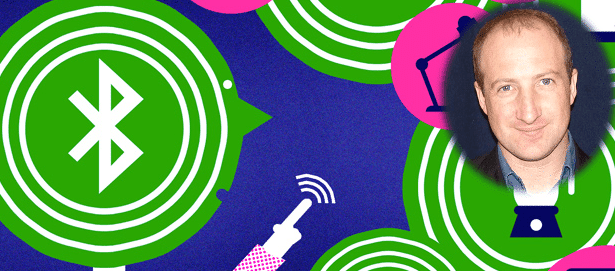Q: What are the top three recent technologies disrupting the Internet of Things (IoT) space?
A: The continual rise of cloud services, wearables and Windows 10 on embedded devices would be the top three on my list.
my list.
Q: What is the one thing that makes everyone turn to cloud technology?
A: The beauty of the cloud is that it can instantly meet demand, due to the large capacity of the provider’s remote servers.
Q: What does it mean for companies?
A: The cloud offers flexibility, in that a company can offer a service prior to purchasing all the hardware needed as in the pre-cloud days. This will continue to allow companies to estimate costs more predictably (especially start-ups) as they can incrementally add-on services when needed and when resources allow. No over-provisioning anymore. It will also lead to a lower carbon footprint for organisations. Therefore, in the short term, companies will buy less dedicated hardware in the form of servers and move to renting capacity as needed in the cloud.
Q: How will the cloud benefit a design engineer working on sensor-based IoT products?
A: Even though the amount of data exchanged by objects through embedded sensors is not large, overall, due to the large number of objects and the frequency of transmission, the infrastructure needs to deal with big volumes of data. The cloud is perfectly-suited for this. We also need redundancy at several levels and automatic adaptation to changes, in order to achieve robust communication in the IoT and the cloud is perfect for providing this. The IoT, of course, needs to be scalable to a large number of objects and people. Privacy and security are necessary for applications that use billing information, for example.
Q: Why will Windows 10, in particular, play such a big role in the IoT?
A: This past year saw the announcement that Microsoft is releasing a free version of Windows 10 that supports Raspberry Pi II. This came at the same time they announced that they would no longer produce any Windows RT, which is interesting. Windows RT was dead from the start, but the vision to port Windows to newer, lower-powered devices was not without merit.
The landscape has changed from people simply buying desktops to a ubiquitous dream world of cheap, low-powered, Internet-connected tablets and configurable platforms like the Raspberry Pi. A great feature of the Raspberry Pi, apart from the cost, is the vibrant developer community that has grown around it. Microsoft has seen this and, with the lessons learnt from the poor adoption of Windows 8, is keen to get its next operating system out there, onto as many devices as possible.
Their full version of Windows 10 is known as ‘Industry’. This is the Windows 10 ‘Mobile’ embedded version. Windows 10 will, of course, be free on all IoT devices, including phones and tablets with screen sizes less than nine inches. The Raspberry Pi II is just one of these new IoT platforms.
Q: What is your view on this?
A: Overall, it seems a good move. More and more new comers to technology, especially in developing countries, are becoming exposed to development through devices such as the Raspberry Pi. So, for Microsoft to get them from the start can only lead to more of the next generation becoming familiar with the Windows ecosystem and making that their platform of choice on all devices – thus keeping them onboard as users. This is crucial as the market for devices has become more and more fragmented. Microsoft has made a good decision on this occasion.
Q: What is the market for IoT moving towards?
A: The IoT, where regular items such as refrigerators or washing machines have enough smarts to talk to each other, is a hot trend. So far, very few wearables connect with those products. Samsung’s Smart Home, unveiled at the Consumer Electronics Show (CES), lets users manage all their connected appliances and devices through a single application. It also works with the Galaxy Gear. We will see many more examples like this over the coming years. Essentially, all wearables need to connect to an even smarter device, like a smartphone, to function. Galaxy Gear, for instance, sends an alert when an e-mail arrives and lets you read a paragraph or so, but you have to go to your phone to actually read the entire note and respond. Many others operate in the same manner. These devices have to be standalone and do something great on their own to get mass adoption.
Q: Talking about wearable devices, where are we currently placed?
A: Health devices make up the vast majority of wearable sales today and that is likely to continue. These are all contributing to the IoT. Making a fitness band or smartwatch isn’t quite as complex – or as pricey – as building a smartphone or a laptop, and the chip companies who want to help the wearables market grow are making it as easy as they can. Many have built reference designs that customers can take and rebrand as their own. They have also created things like electronics boards that have all the necessary components integrated together. Kickstarter has helped companies like Pebble start from scratch and focus on just one thing: making a great wearable device. That is going to continue, but chipmakers predict that companies focused on other areas will also jump into the market. That could be healthcare and medical device companies looking at devices like a glucose monitor.
Q: What about smart clothing?
A: Smart clothing technology like Sensatex Inc.’s smartshirt system and Under Armor’s E39 compression shirt enable remote monitoring of a wearer’s heart rate, breathing and other vital signs. Besides helping athletes identify and address performance issues, such clothing could also be used to monitor the vital signs of elderly and invalid patients, those in post-operative care and those in hazardous conditions, like soldiers and fire-fighters. Similar technologies could be used in clothes worn by factory workers or truck drivers to track their movements and monitor for signs of fatigue or other problems, also raising potential privacy issues. The danger: biometric and physiological data gathered from the shirts is typically transmitted via Bluetooth or protocols such as Zigbee, making it vulnerable to interception and compromise. Manufacturers are also working on smart buttons that could change the colour of a fabric when pushed or buttons and fabric that could measure ultra-violet exposure in sports equipment.
Q: Could you tell us about any exciting emerging applications in the field of wearables?
A: One cool application was by a team at the University of California, San Diego, which is exploring a new type of tattoo — one that monitors sweat. The sensors, which apply to the skin, act as temporary tattoos. In the Journal of Analytical Chemistry, researchers explain that these thin strips of adhesive can track an athlete’s chemical balance to gauge his physical activity.
Another wearable with much potential is a concept prototype from Intel codenamed Mico. Mico is a bio-headphone, created by Neurowear, which plays music based on a user’s emotional state. Mico uses a forehead sensor that can read a wearer’s thought patterns to determine one of three possible mood states: focused, drowsy and stressed. This allows the selection of music from a database that corresponds with that feeling. The headphones connect to a user’s iPhone through Bluetooth and choose from over 100 songs that have been ‘neuro-tagged’ using a special music app. This could be useful for people with disabilities.
Q: Who are the players?
A: Offerings come from companies such as Olympus, Innovega, Sensics, Vuzix, Epson, Lumus, Oakley and Baidu.














